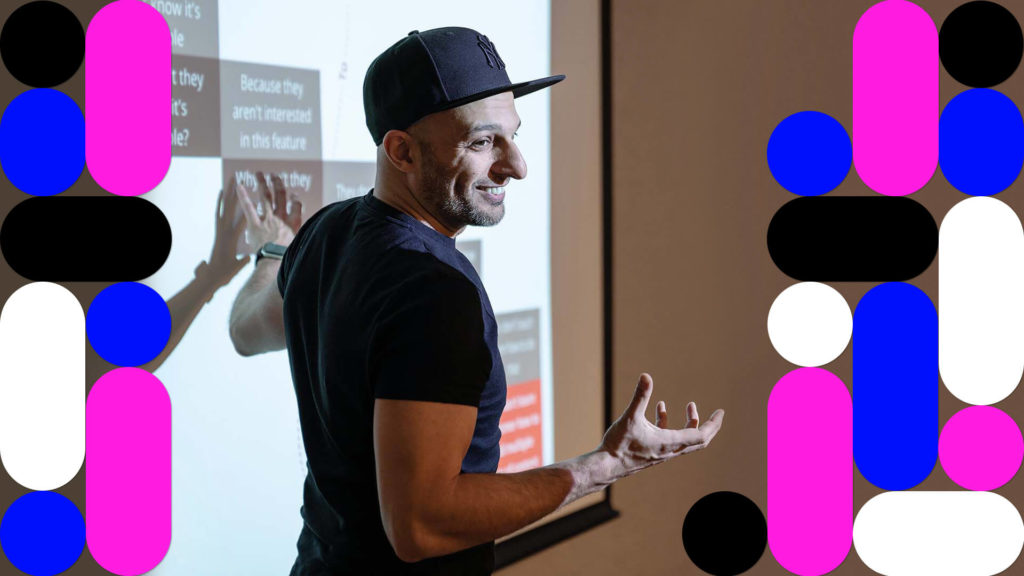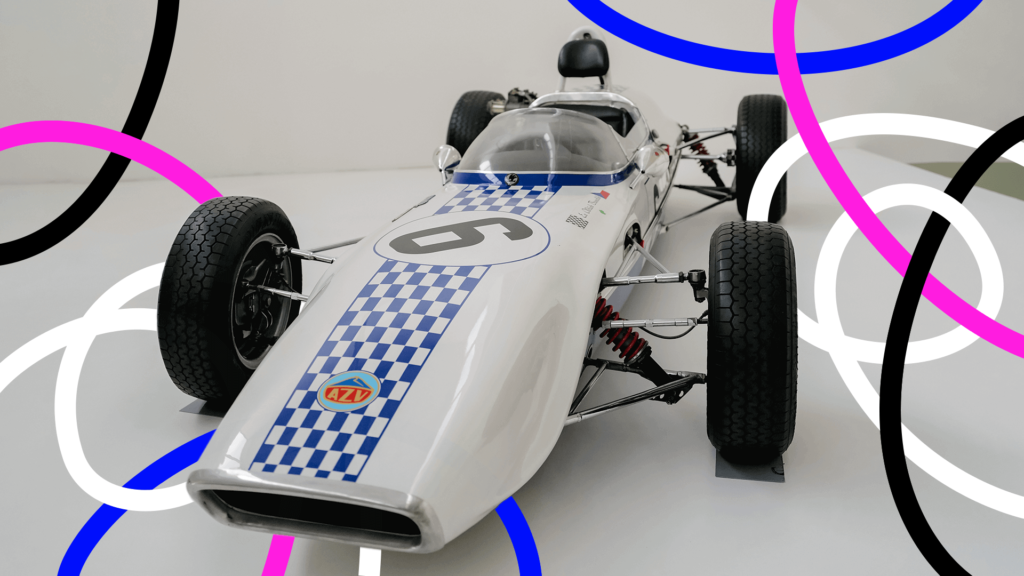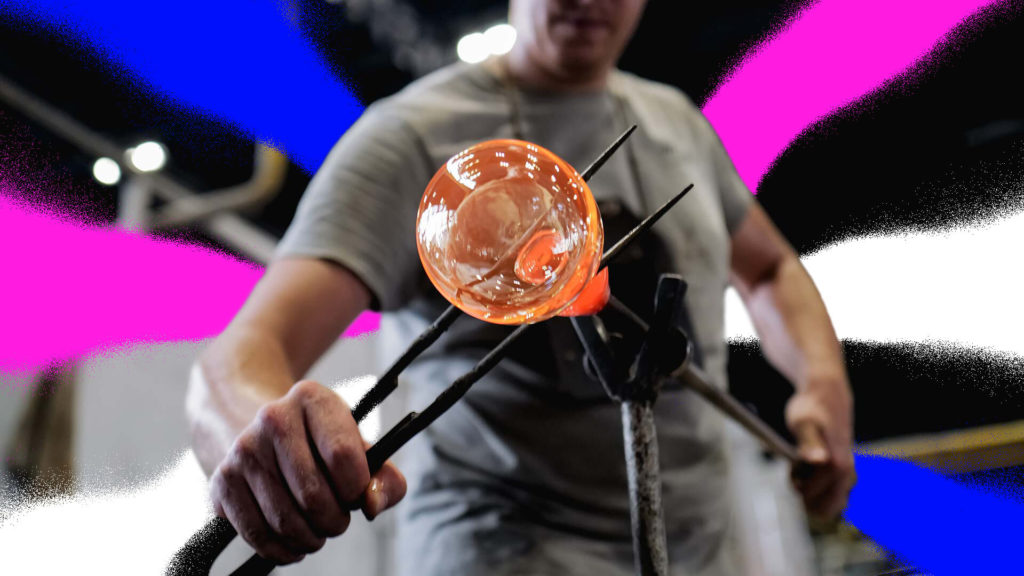Cut. Two hours later, we are all enthusiastically sharing our ideas, coming up with crazy thoughts and laughing together. When we are told to draw as many shapes of an apple as possible, we start with the classic Apple logo, then get to dried apples and apple cores, and a moment later, we get to Jablotron. Then, we are given the task of inventing various possible factors that can make one’s stay at home unpleasant, and we find that while some of us are terrified by the thought of a snake in the toilet, the fears of others might be provoked by a marten in the attic or by a foil on a screen. We are surprised at how we managed to set our minds free and collectively come up with so many ideas. In the next part of the workshop, we get more serious: we learn how to structure our ideas and choose the ones that are the most profitable.
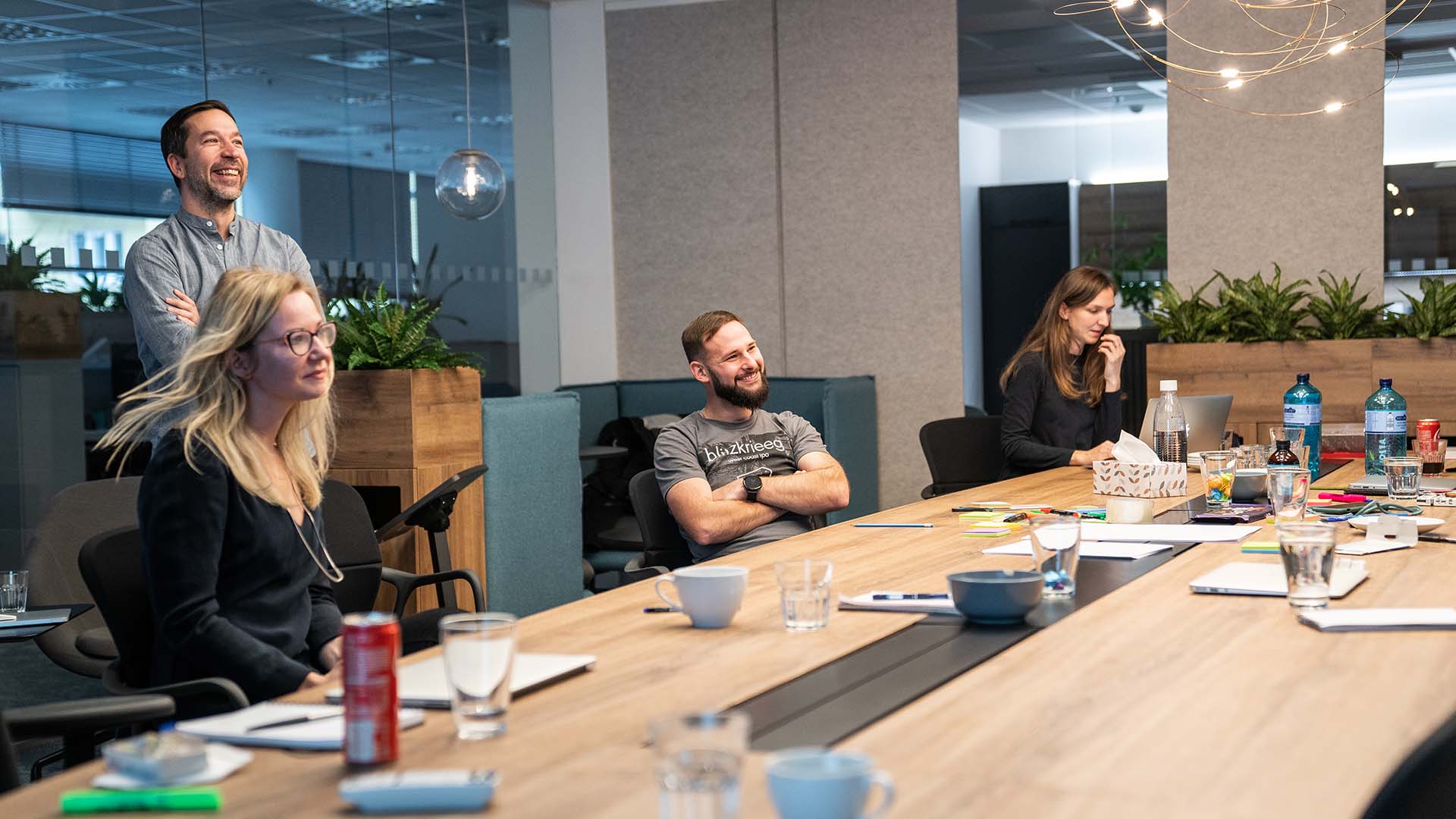
After this experience, we know that the phrase “I’m not creative” makes no sense. Surprising suggestions came even from those who, at the beginning of the workshop, claimed that they probably wouldn’t come up with much. “Creativity is not a talent, it’s a process. Some people just don’t know how to get there,” says Marv when we meet a few weeks later for an interview. We begin by talking about the period in which our thinking is shaped the most: childhood.
You were born in Baghdad, where you lived until you were 12 years old. What are your childhood memories?
It was an extremely difficult period. I was born into the war. I remember playing in the streets, collecting bullets and anti-aircraft ammunition falling from the sky. Right after a bombing, we ran out and competed over who would collect the most metals and bring home the trophies. Today, the memories make me laugh, but at the same time, I know that these times certainly traumatized me. But back then, I didn’t realize that, I just took things as they were.
In short, children always find a way to play – even when they are in a war.
Yes, even neuroscience proves that children constantly need a stimulating environment, wherever and whenever they are. Just look at what happens when you take away the carousel that hangs over the crib. The child starts to scream because it lacks stimuli. Even the smallest kids are explorers. The main task of our brain is to help us survive, but immediately after that follows the need for discovery. Us Iraqi children, we were in a similar situation, we were not so different in this respect from our peers in the Czech Republic. We had to keep developing. Learning is a process that can evoke feelings of happiness in both children and adults. But due to a poorly set up educational system, many of us become reluctant to learn later in our life.
How do schools destroy the joy of learning?
By a huge number of prohibitions and orders. According to some studies, children will lose up to 96 % of their creativity in the first grade, they lose their interest and desire for discovery, and they become afraid to make mistakes. But the reluctancy to learn is also evoked by us, their parents, and our own restrictions: “Don’t go anywhere, don’t run, don’t do this and that.” The child then just sits opposite you and doesn’t know what to do – and they just need to do something. Nowadays, they reach for an iPad, or Nintendo, or any other interactive platform they have on hand that gives them the opportunity to discover.
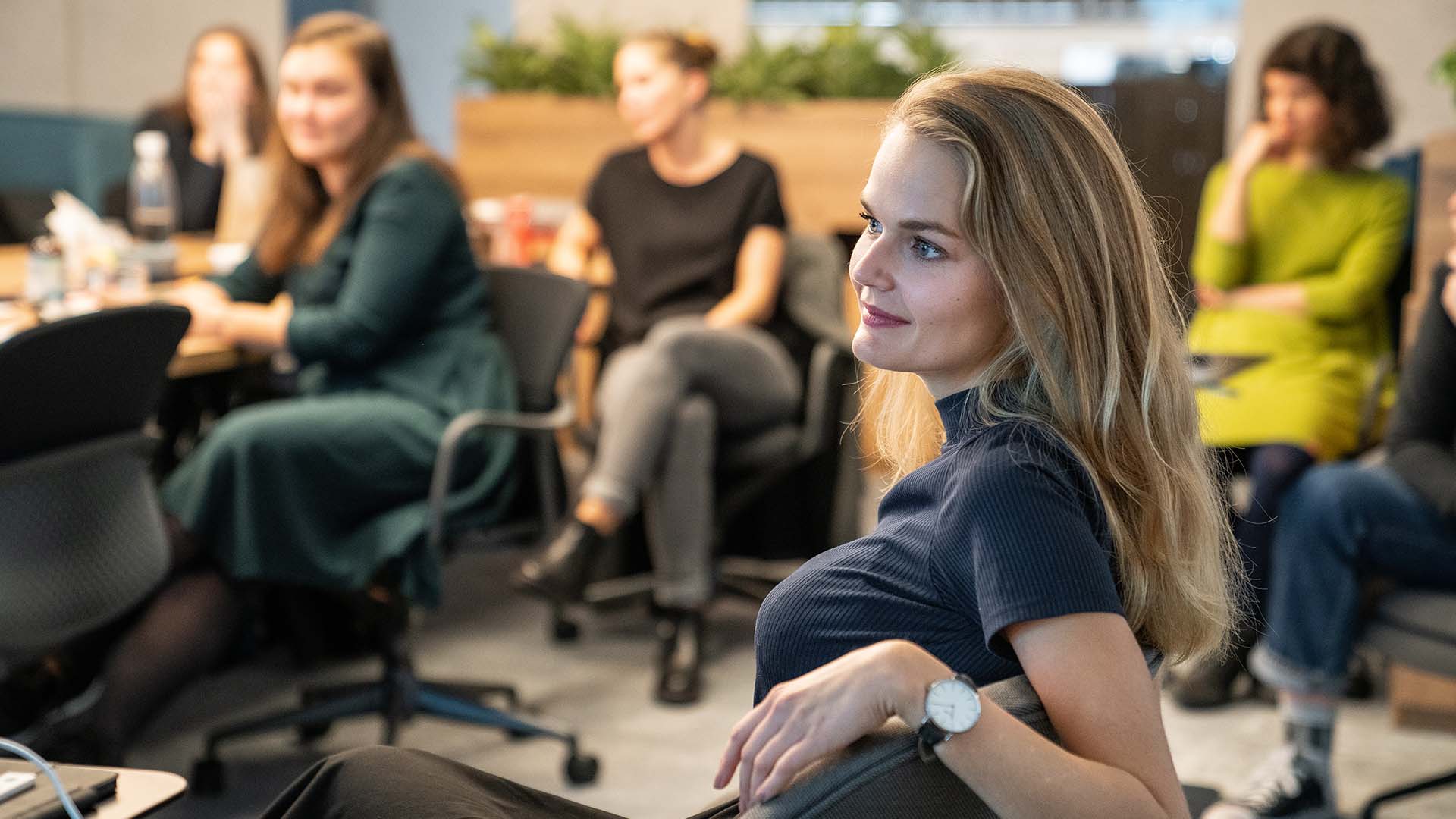
But many experts say that children need boundaries. So how do you set them up without undue restrictions?
This is a big topic for me now, because I am starting a new school and I am trying to solve how to set the ratio of freedom and limits correctly. I never really believed that you need to give your children boundaries in order to make them feel safe, but when I look at my sons, I see that it is truly essential. When they are left with complete freedom, children feel unsure and scared. That’s why I try to set rules within which they can do whatever they want. For example, I give them 20 minutes a day on an iPad and they can choose whether to watch YouTubers or play Minecraft. That time is simply theirs.
And after that time, do they really give you the tablet back?
Of course, sometimes they want to continue. But at that moment, another rule comes into action: give children the freedom of choice. I’ll ask if they want to finish now, or in five or ten minutes. By doing that, we usually get to a maximum of 20 plus 10 minutes. When children can decide for themselves, the chances of them keeping their promise increase. They feel that they did what they wanted and even had the chance to choose. In addition, we build trust with each other, but at the same time I still control everything from a distance and set natural boundaries.
The joy of apples, the fear of the new
We often encounter prohibitions in adulthood and employment too, they are common mainly in large corporations. You also do creativity workshops for teams from large companies, and you teach them to find a way to innovate. What do the first meetings with them usually look like?
They often have trouble coming up with anything. From childhood to school, due to social relations and pressures, they have reached a point in their lives where they just keep doing the same things over and over again. Because of social expectations, bans, limitations, and restrictions, they forgot how to think out of the box. For example, when I try an exercise with them – the same one that we did together – and tell them to draw as many apples as possible, they sit over a blank piece of paper for a long time. It is often difficult to make them begin, because the human head hates change, it is afraid of the unknown. But when they overcome their fear, it’s worth it. Then, they become excited – “Wow, we came up with twenty different apples!” Fortunately, companies want to change the rigid system, which is why they call me.
Creative exercise
Do you want to unwind your creativity? Here is a simple exercise that we tried at the workshop. Take a piece of white paper, colored markers, and try to draw as many different apples as possible in 10 minutes.
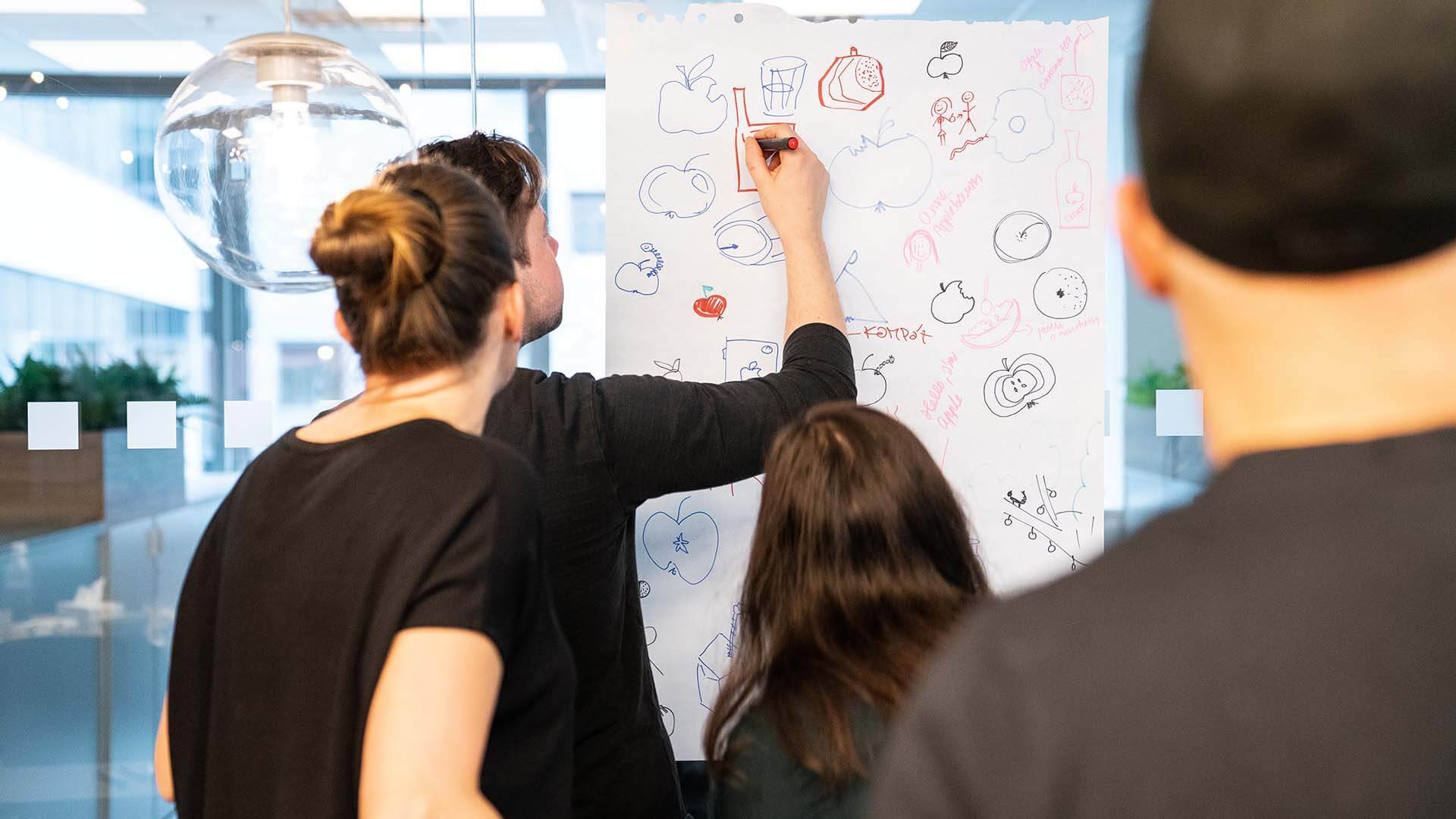
The words are important. Even in the context of creativity
“If you want to stimulate creativity, you also have to set the task well,” Marv points out. The words you choose define how much creative space you have when fulfilling the task.
See it for yourself and compare:
Draw an apple.
Draw as many apples as possible in different forms.
Draw everything that comes to your mind when you hear the word “apple”.
It is true that we also had some people surprised at the number of thoughts they were able to come up with at your workshop even though they were convinced that they are not creative. And there were only nine of us and we are not a corporate.
We all have creativity within us. The main difference lies in whether we can come up with an idea systematically. Creativity is a process, not a talent, we are all born with the same predispositions. But some can find a way to the process easily, while others have been suppressed by, for example, comments from the public. All it took was, for instance, that you drew a butterfly as a child and a parent or a teacher threw the picture away with words: “Come on, what is this? It doesn’t look like a butterfly at all.” These moments stay with us, either consciously or subconsciously, and limit our thinking. We tend to carry this stigma into our profession: we prefer to say that we cannot be creative instead of admitting that we are, in fact, afraid.
Is it possible to find a way back to the process again?
It’s difficult, but possible. You must have the courage to leave your comfort zone. But sometimes, you need to start by researching who you are and what system has been established in your head first.
You see fear as the greatest enemy of creativity. How do worrries limit us?
Fear is an obstacle to creativity on several levels. People are afraid that others will judge them and laugh at them, so they prefer to keep quiet. No idea is stupid, a healthy team should say: it sounds crazy, but let’s take a look at it. We are also burdened by the fear of making mistakes – when in fact, it’s the errors that usually get us to innovations. Years ago, one friend of mine was working for the American Google and he told me that one of the leaders measured success by the number of mistakes – the more a team made a month, the better it was evaluated. An error can be the best experiment that leads to valuable knowledge – but we must distinguish between various types of mistakes.
What are the different types of errors?
Predictable – We do them in those areas where we know what the result should look like, and we also know the steps that should lead towards it. Imagine a car service or financial statements. These are fields in which we should not make any mistakes at all.
Complex – We are still in an area that we know well, but new circumstances may arise and surprise us. Imagine, for example, medical diagnosis or team leadership. You may read a lot of books about the given fields, have a profound experience in them, but still, each patient and each team is different. What worked for one does not necessarily have to work with another. Of course, mistakes can be made here. But it is important not to repeat them under the same conditions.
Intelligent – This type of error is best illustrated by Edison’s famous quote: “I have not failed. I’ve just found 10,000 ways that won’t work.” If something doesn’t work, it really just gives us information about which path not to take again. This “mistake” can be seen as the discovery of practices that won’t work, which is a must if we want to move forward.
“It is our role as leaders to help people distinguish between these types of mistakes. And to make them see smart mistakes as a way to innovate,” Marv Shamma explains.
But aren’t companies trying to use pigeonholing and bans to prevent mistakes that could harm their business?
Definitely, but that’s why it’s important for companies to split into two different streams. The first one should manage a thriving business that could be possibly harmed by a mistake – there is not much room for revolution, although of course such teams can still evolve and develop. Parallel to the “conservative” teams, an innovative branch should also be set up, in which mistakes are, on the contrary, desirable. In the long run, innovation teams can actually save the thriving business. After all, we constantly celebrate various innovations, but we only rarely look at the amount of errors that preceeded them. One branch should simply work according to the motto Run the business, the other according to Change the business. That is an approach that we promote in the Atairu Leadership Institute. The problem is that corporations often absurdly mix these two different approaches together.

I had to do something about it
You often mention that your life experience has allowed you to see an opportunity behind every challenge. Can you recall any recent example?
One instance would be the Flow school that we are opening in September 2022. I always had a problem with educational institutions, I never did a lot of studying, but I didn’t fail, I did alright. I tried to understand the system, but no one ever explained to me why things work the way they do. When the boys were born, I thought I had to do something about it. And thus, for three years now, I have been developing my own concept of primary and, perhaps, secondary schools. The first one should open this year. Here, children will learn contextually and through projects, you will not see any set subjects here.
You believe that this approach won’t result in the aforementioned resistance to learning?
Yes, because children can absorb and understand information better this way, they will not get bored, and they will not learn just because they are obliged to. For example, I can imagine us telling children in the first grade that in the future, our cars will be powered by hydrogen – and we will take a good look at that element. There is plenty of handy teaching aids on the market, such as teaching boxes, which can demonstrate a chemical reaction. We will explain mathematics, chemistry, biology, and physics all at once. We would like to make children comprehend the phenomena in such a depth that they can understand the context and come up with unexpected ideas. We want to try to mix ingredients that we all know, but no one has ever combined before. And create a cocktail that tastes like nothing we have ever tasted. Creativity does not have to be just about inventing completely new things, but also about improving the existing ones.
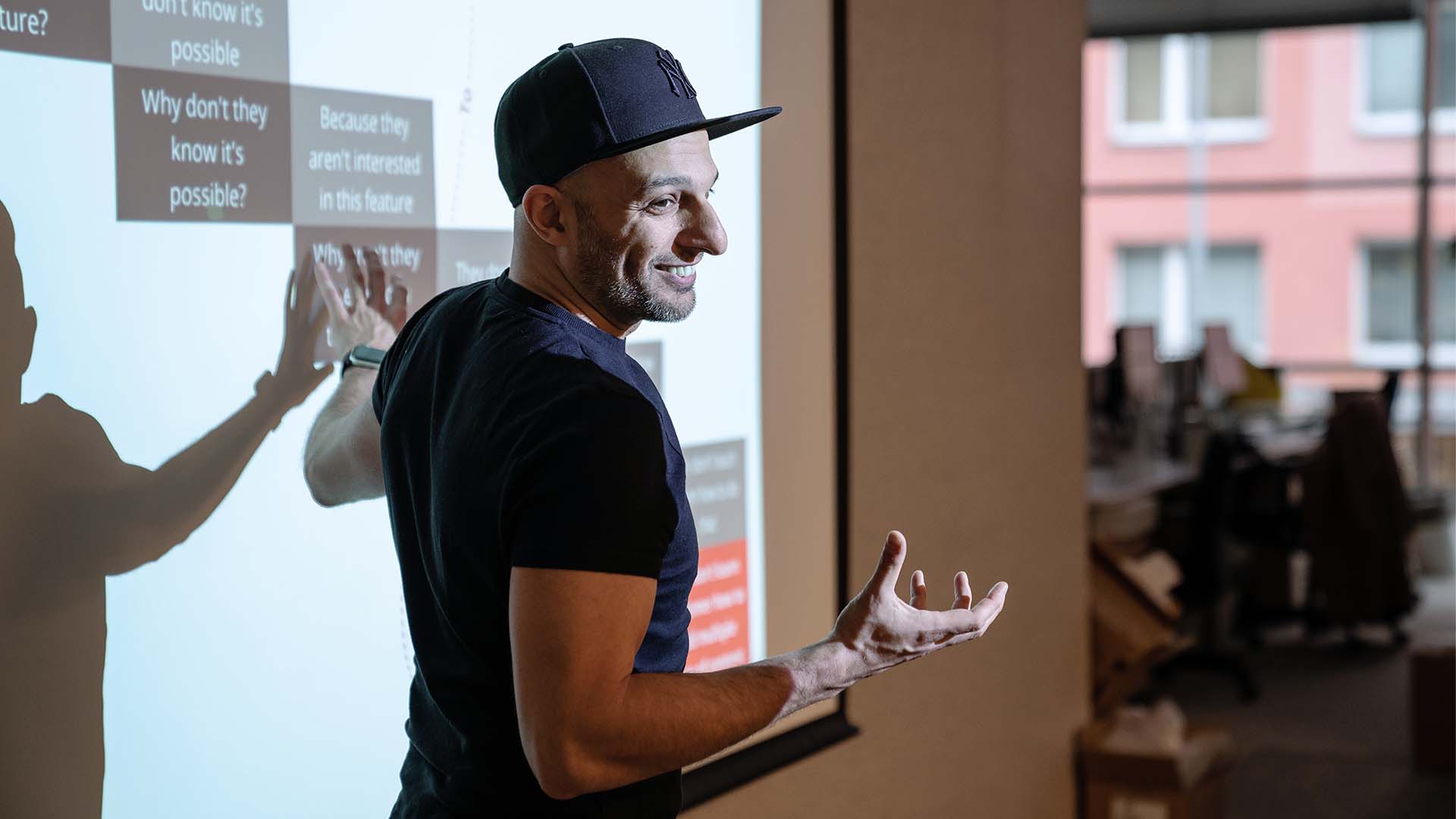
MSc. Marv Shamma, M.A., CPT
Our blog is too small to list all of Marv’s expertise. He studied artificial intelligence at the University of West Bohemia and Change Management & Digital Transformations on Hyper Island, Sweden. He is a leader, business innovator, lecturer, founder of several startups including the Flowberry educational platform and soon also the Flow school, an expert in talent development, team dynamics and creativity … And also a father of twins who loves to get up early and start his mornings with exercise and meditation. He doesn’t like alcohol that much (even though he tried a few beers from some microbreweries with us), but he loves good food, and he is vegan. Does he ever experience a creative block? “Of course! When that happens, I just eat, exercise and sleep – basically, I am cleansing my brain. Some days, I have plenty of ideas, but I can’t implement them because I lack the know-how. That’s why I try to surround myself with talented people who help me to turn the ideas in my head into reality.”

